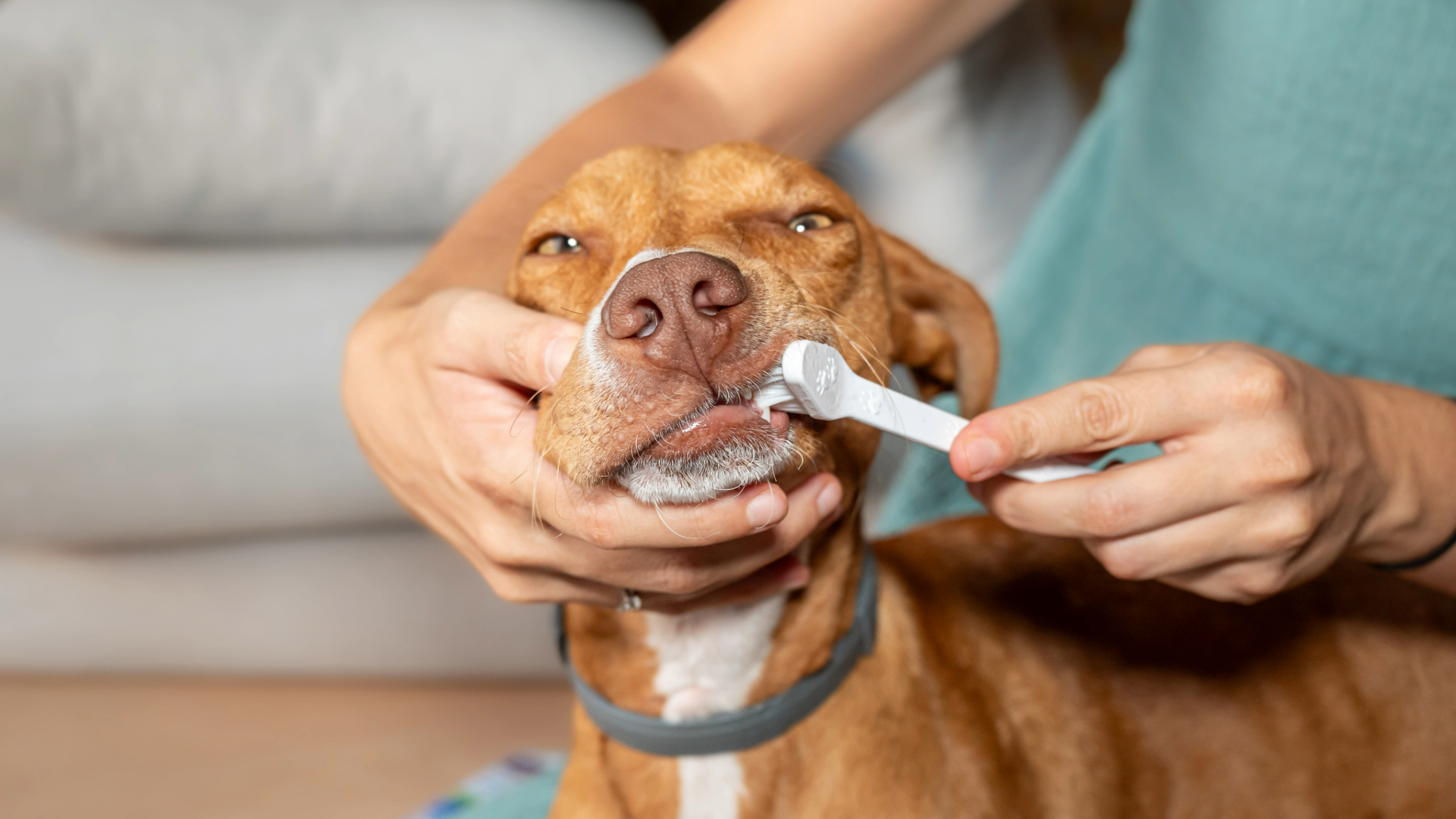
Have you ever wondered whether you can use regular toothpaste on dogs? More and more people are listening to their vets and including oral care as part of their dog’s daily routine, but when it comes to the best toothpastes for dogs, there’s still some confusion.
It seems like a lot of hassle to have an extra tube of the best dog toothpaste, and it’s more expensive than some human ones. leading people to ask, “Can you use regular toothpaste on dogs?”.
I’ve been working as a vet for more than eight years and in that time I’ve seen a lot of dental problems. In fact, dental disease is the most common condition our pets suffer from, according to a study published in the Journal of BMC Veterinary Research.
Keeping your dog's teeth clean with regular brushing is one of the best things you can do to help them, but it does need to be their own toothpaste, not human toothpaste. In fact, this is pretty important, and I’m going to explain why.
Can you use regular toothpaste on dogs?
It’s not a good idea to use regular toothpaste on dogs. Human toothpastes contain ingredients that are safe for humans, but toxic to dogs – especially when you remember that we spit our toothpaste out, and our dogs don’t. Here are some reasons why it's best to avoid it:
1. Fluoride can be toxic
Most human toothpastes contain fluoride which helps to avoid cavities. However, we spit out our toothpaste, rather than swallowing it. When swallowed, fluoride can be toxic to our pets. Although a large amount can be fatal, small amounts over a long period can also be problematic, causing skeletal problems, weight loss, and lethargy in dogs.
2. Some toothpastes contain xylitol
Since sugar is bad for human teeth, increasing the rate of cavity formation, some toothpastes are sweetened with xylitol. This tastes sweet but isn’t as bad for your teeth. But most importantly, it’s really toxic to dogs. Even a small amount of xylitol causes an often fatal drop in blood glucose, causing dogs to collapse and start seizing.
3. The flavor can be off-putting
Another important consideration is that dogs don’t generally like their toothpaste as strongly flavored as we do. The strong mint flavor of some toothpastes can cause dogs distress and put them off having their teeth brushed. Since their co-operation is kind of essential for toothbrushing, it’s best not to use anything they dislike!

What toothpaste should I use on my dog’s teeth?
So, now you know you can’t use human toothpaste on dogs, what should you use? Well, the best toothpastes for dogs contain enzymes, which help to clean the teeth even if brushing isn’t perfect. They’re also flavored for dogs – usually with meat flavorings – to make sure your dog is a willing participant in the brushing process!
If your toothpaste is listed on the VOHC list of approved products, it means it has been independently assessed by a panel of veterinary dental health professionals.
If you can’t find a toothpaste your dog likes, or you have run out, don’t use human toothpaste. You’re better off just using water – most of the benefits of toothbrushing come from the mechanical action of the bristles cleaning under the gum line and disturbing the plaque rather than the toothpaste itself.
You’ll also need to get yourself the best toothbrush for dogs, although I’d definitely say when it comes to toothbrushes, one size does not fit all! You might find it takes a bit of trial and error before you find a toothbrush your dog enjoys – don’t give up on it!
Do I have to clean my dog’s teeth?
As we said earlier, periodontal disease is the most common disease our dogs suffer from and can result in pain, repeated operations, and tooth loss. So, it makes sense to do everything we can to prevent it.
Studies have consistently shown that even though there is a strong genetic element, brushing your dog’s teeth is the best way to prevent periodontal disease. Our article on how to brush a dog’s teeth might help.
That said, if your dog really isn’t getting to grips with toothbrushing, there are other things you can do to help. Plenty of other products on the VOHC list are proven to help reduce plaque and/or tartar build-up in dogs, so take a look and see what might suit your routine. Some are food additives, others are water additives, and there are special dental diets too. None of these things are as good as toothbrushing, but they’re better than nothing if your dog really isn’t playing ball!
You might also find helpful: A guide to healthy dog gums and how to prevent and treat dog gum disease.







